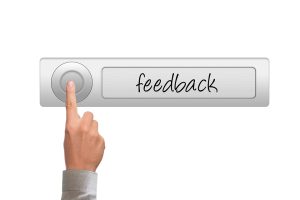Mastering the Art of Internet Marketing Sales Funnel
The world of internet marketing can seem like a whole universe of possibilities and complexities. With so many strategies and tools available, it can be hard to know where to start or what to prioritize. However, if there is one concept that lies at the core of successful internet marketing, it’s the sales funnel.
In simple terms, a sales funnel is a model that represents the journey a potential customer takes from the moment they first become aware of your business to the point of making a purchase. The idea is to guide them step by step through the buying process, building trust and interest along the way.
While this may sound straightforward in theory, the reality can be much more intricate. Each stage of the sales funnel requires different approaches and resources, and optimizing them can take time and effort. Nevertheless, by mastering the art of internet marketing sales funnel, you can unlock the full potential of your business and increase conversions, revenue, and customer loyalty. Let’s dive in!
H1: The Three Main Stages of the Sales Funnel
The first essential aspect of the sales funnel is understanding its three main stages. These are:
1. Awareness: This is the top of the funnel, where you attract new visitors to your website or social media profiles. Here, your goal is to offer valuable and engaging content that introduces your brand, products or services, and generates interest and curiosity.
2. Consideration: At this stage, potential customers have shown some level of interest in your business and are actively seeking more information. You need to provide them with relevant and persuasive content that addresses their needs and concerns, and highlights the benefits of what you offer.
3. Decision: The bottom of the funnel is where the actual sale happens. This is the stage where you need to provide a smooth and compelling purchasing experience. This could include creating urgency through limited-time offers, providing free trials or demos, or offering excellent customer support.
H2: Techniques for Maximizing the Effectiveness of Each Stage
To achieve optimal results with your sales funnel, it’s essential to use specific techniques for each stage. Here are some examples:
1. Awareness: Use social media platforms and online ads to drive traffic to your website. Offer free resources such as e-books or webinars that require users to provide their contact information. Use lead magnets like discount codes or exclusive access to further incentivize them to subscribe to your email list.
2. Consideration: Create different types of content that address the diverse interests and concerns of your potential customers. Use blog posts, videos, case studies, and testimonials to showcase your expertise and provide value. Personalize your approach by using email segmentation and sending targeted messages based on users’ behavior and preferences.
3. Decision: Simplify the checkout process by removing any unnecessary steps, offering multiple payment options, and providing clear and concise instructions. Use social proof by featuring customer reviews and ratings, highlighting the benefits of your products or services, and showcasing your guarantee or return policy.
H2: Essential Tools for Building and Optimizing Your Sales Funnel
To streamline the management and optimization of your sales funnel, it’s crucial to use the appropriate tools. Here are some essential ones:
1. Customer Relationship Management (CRM) software: This type of platform helps you manage and analyze customer data, track user behavior, and automate specific tasks such as email campaigns and lead scoring.
2. Landing page builders: These tools allow you to create customized landing pages for each stage of your sales funnel, with features such as A/B testing, pop-ups, and mobile optimization.
3. Email marketing software: Using a dedicated platform for creating and sending targeted and automated emails will enhance your communication with leads and customers, and increase engagement and conversions.
H2: Measuring and Analyzing Your Sales Funnel Performance
Finally, it’s essential to track and analyze the performance of your sales funnel to identify opportunities for optimization and growth. Here are some essential metrics to monitor:
1. Traffic sources: Knowing where your visitors come from and which channels generate the most leads or conversions can help you allocate your resources more effectively.
2. Conversion rates: Tracking the percentage of visitors who move from one stage to the next in your sales funnel helps you identify any bottlenecks or areas for improvement.
3. Customer lifetime value: This metric represents the average amount of revenue a customer generates over their lifetime. By analyzing this data, you can adjust your pricing, retention, and customer acquisition strategies.
Conclusion
Mastering the art of internet marketing sales funnel is a process that requires continuous learning, experimentation and refinement. By applying the techniques and tools described above, you can create a powerful and effective sales funnel that increases your revenue and customer loyalty. Remember always to provide high-quality content, personalize your approach, use multiple channels and optimize every step of the way.
FAQ:
Q1: Can I use the same approach for every type of customer?
Answer: No, each customer is unique and has different interests, needs, and preferences. Personalizing your approach and using segmentation will help you create targeted and relevant content that resonates with each customer’s particular situation.
Q2: Is it more important to focus on attracting new customers or retaining existing ones?
Answer: Both are crucial for the long-term success of your business. While attracting new customers is essential for growth, retaining existing ones is more cost-effective and generates more revenue over time.
Q3: How often should I update my sales funnel?
Answer: It’s a good practice to review and update your sales funnel periodically, especially if you notice a decline in its effectiveness or changes in the market or customer behavior. However, avoid making too many changes too frequently, as this can disrupt the flow and confuse prospects.
Q4: Is it better to use multiple sales funnels or one overarching one?
Answer: It depends on your business goals and products or services. If you offer different value propositions or serve multiple customer segments, you may need to create separate sales funnels to address each one’s unique needs. However, if you have a straightforward and standardized offering, a single sales funnel may suffice.
Q5: How long does it take to see results from a sales funnel?
Answer: The timeframe for seeing results from a sales funnel can vary depending on several factors, such as the size of your audience, the complexity of your offering, and the efficiency of your follow-up and nurturing processes. However, by tracking your metrics and adjusting your approach as needed, you should start to see improvements in your conversion rates and revenue within a few weeks or months.






